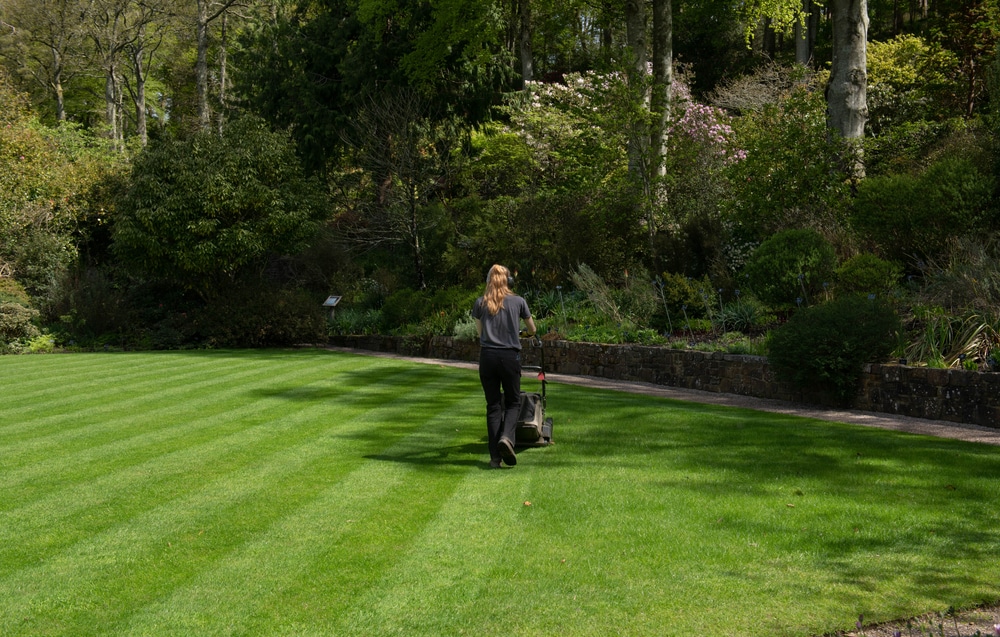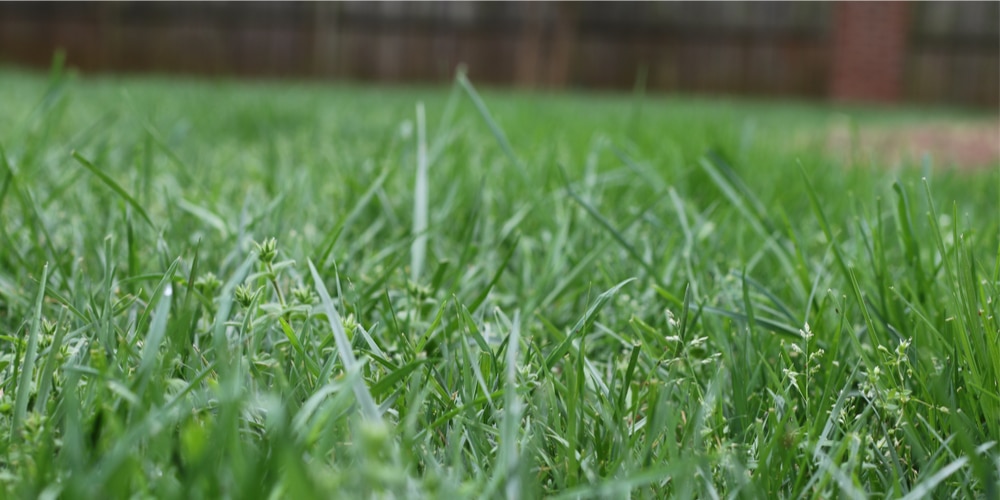The USDA’s Plant Hardiness Zone Maps work as a gardener’s bible, as they can help you determine what plants will and won’t thrive where you live and garden.
These hardiness zones can help you determine the best grass to plant in your area, whether you have full sun, shade, or anything in between. In this case, we’ll look at the best grass seed for zone 7.
Grasses for Full Sun in Zone 7
With quite a few choices for lawn grasses, these three varieties stand as excellent choices for full sun locations in zone 7a or 7b.
Bermudagrass
If you’ve ever had Bermuda grass where you don’t want it to grow, you know how hardy and insistent this grass can be. It thrives in full sun. Zones 7a and 7b can drop into temperatures in the teens and single digits, but Bermudagrass can handle those cold nights.
It will probably turn brown in the winter, but so will most grasses. The higher temperatures and humidity levels of the warmer months in zone 7 won’t trouble Bermudagrass.
Buffalograss
Zones 7a and 7b contain a few dry areas where rainfall isn’t exactly the norm. Buffalograss enjoys full sun, but it also has a high drought tolerance. As a result, it does not thrive in areas where rainfall is common.
It only grows to about eight inches, so it stands as a low-maintenance choice for a lawn. It also does not need fertilization, though it will not object to light infusions of nitrogen.
Kentucky Bluegrass
As a higher-maintenance grass, Kentucky Bluegrass can make for a beautiful, lush lawn, or it can be a field of brown. It will depend on where in zones 7a and 7b you live and how much maintenance you perform on it.
This particular grass has a shallow root system, which means it’s more susceptible to heat and drought than other strains, but if it’s watered properly, it should be fine.
While Kentucky Bluegrass grows most voraciously during cooler months, it will withstand and even enjoy full sun, provided its water needs are met.
A well-kept Kentucky Bluegrass lawn is a thing of beauty to behold.
Grasses for Partial-sun Lawns in Zone 7
Now to the best grass seed for zone 7 for partial-sun lawns. No matter the high and low temperatures of a given area, a plant that needs full sun won’t do well if it’s planted in the shade. But some of us have lawns with lots of shade, and full-sun grass won’t work for every lawn in zone 7.
Fescue
With many varieties—fine fescue, creeping red fescue, Chewing’s fescue, and on and on— fescue offers options for the low-sun lawn. In zone 7 and below, it’s a perennial grass, but if you’re planting it in zone 8 or higher, you’ll need to re-seed every year.
Fescue grasses do well in partial sun or shade, and since it’s a cool-weather grass, the absence of direct sunlight won’t hurt. Excessive heat, though, may cause it to go dormant, at which time it will turn brown.
This dormancy will end when the weather cools.
Zoysia
With several varieties to choose from, zoysia offers a few full-sun incarnations. However, it’s grass for partial-sun lawns. Unless your lawn gets no direct sunlight, this particular species should grow well for you in zones 7a and 7b.
Most cultivars are cold-tolerant, though some don’t respond well to the occasional freeze.
Zoysia produces a lush, thick lawn in partial shade.
St. Augustine
This wide-bladed grass does well in shade provided it gets at least some direct sun— a minimum of four hours will be best for it to thrive.
While St. Augustine grass yields a thick lawn, it is susceptible to the chinch bug, which will attack the grass stems, eventually killing them.
Best Grass Seed for Zone 7: Final Thoughts
Available grass varieties boggle the mind. Narrowing choices to the ones best suited to your plant hardiness zone makes choosing one easier, and you can further narrow your choices by paying attention to the available sunlight on your lawn.
Several types of grass grow well in zones 7a and 7b, whether your lawn can provide full sunlight or just a few hours per day. And now you have a good selection of the best gass seed for zone 7.

